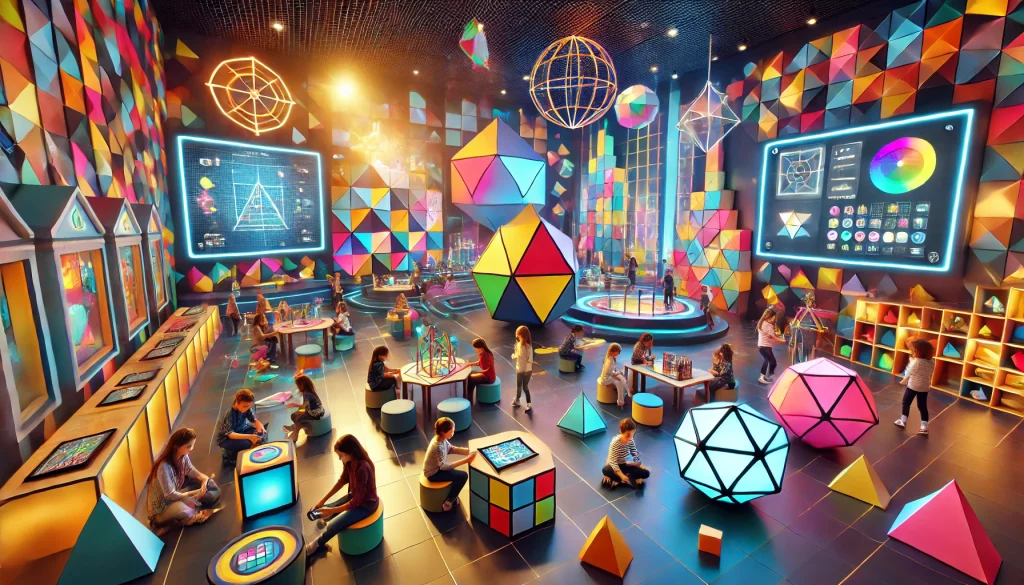What is a Geometry Spot?
A geometry spot can be defined as a designated area within an educational context where individuals engage with geometric principles actively and interactively. These spots can exist in both physical and virtual spaces, serving as focal points for learning about shapes, sizes, and spatial understanding. The physical geometry spot may include classrooms or designated learning areas equipped with tools and resources that facilitate hands-on exploration of geometry concepts, such as protractors, compasses, and geometric models. Conversely, a virtual geometry spot could emerge through digital platforms, where interactive applications enable students to manipulate shapes and explore geometric properties in an immersive manner.
The significance of geometry spots in the learning process cannot be overstated. They provide an environment where learners can transcend traditional methods of memorization and engage in experiential learning. Engaging with geometry in a practical context allows learners to develop critical thinking skills, as they are challenged to apply their knowledge to solve problems and construct new understanding. These spots encourage exploration, creativity, and a deeper comprehension of geometric relationships, which are foundational to various fields such as art, architecture, and engineering.
Furthermore, geometry spots can serve as vital interactive learning environments, fostering collaboration among peers. By allowing students to work together in these spaces, they not only learn from their direct experiences but also from one another. This collaborative element highlights the social aspect of learning, emphasizing the importance of communication in grasping geometric concepts. Overall, geometry spots are instrumental in creating a robust educational framework, enhancing both mathematical learning and spatial awareness among students.
How to Create an Engaging Geometry Spot
Creating an engaging Geometry Spot is essential for promoting hands-on exploration and discovery of geometric concepts among students and children. To start, educators and parents should focus on the selection of materials that are not only educational but also stimulating. Using a variety of tactile materials such as geometric blocks, puzzles, and drawing tools can help bring the concepts to life. Consider incorporating tools that allow for dynamic interaction, such as compasses, protractors, and soft modeling clay. These items enable learners to visualize and manipulate shapes, fostering a deeper understanding of geometry.
Next, the design of the space itself is crucial in promoting engagement. A Geometry Spot should be organized and inviting, featuring dedicated areas for different activities. For instance, a section for building with blocks may encourage spatial visualization, while a creative corner for drawing and designing shapes can spark artistic expression. Adequate signage and instructions can guide learners toward specific activities. Flexibility in the layout is also important; movable furniture can accommodate various group sizes and facilitate collaborative learning experiences.
Moreover, integrating technology can significantly enhance the learning experience. Incorporating tablets or computers with geometry-related software or applications allows learners to explore geometric concepts through games and simulations. Interactive whiteboards can also be utilized for collaborative problem-solving sessions, enabling participants to work together on geometric challenges. Finally, consider implementing group activities that promote teamwork and communication, such as geometry scavenger hunts or design challenges. These activities not only build foundational skills but also make the learning process enjoyable and engaging for students of varying ages. Engaging Geometry Spots can, therefore, play an important role in enhancing students’ insights and appreciation of geometric principles.

Activities for Learning at the Geometry Spot
Engaging students in hands-on learning is a fundamental approach to teaching geometry effectively. The Geometry Spot offers a variety of activities tailored to different age groups and learning objectives, creating a stimulating environment that merges education with enjoyment. For younger children, interactive games such as “Shape Scavenger Hunt” can be implemented. In this activity, students search for specific geometric shapes in their surroundings, enhancing their visual recognition and understanding of shapes in real-world contexts. This not only solidifies their foundational knowledge but also instills a sense of curiosity about geometry in their daily lives.
As students progress in age, more complex challenges can be introduced. Middle school learners might benefit from a hands-on project like “Build-a-Bridge,” where they design and construct a simple bridge using various materials. This activity encourages teamwork and critical thinking, as students must consider stability and geometry while working collaboratively. The primary objective is to foster a practical understanding of geometric principles such as angles, symmetry, and load distribution—elements that are crucial in engineering and architectural fields.
For high school students, the Geometry Spot can host a series of workshops focusing on advanced topics such as non-Euclidean geometry. Activities may include studying the properties of shapes on curved surfaces using technology such as 3D modeling software. This approach demystifies complex concepts and prepares students for future studies in mathematics and science. Throughout these activities, educators should emphasize both the fun and educational aspects of geometry, showcasing how these principles apply to various real-world scenarios.
In conclusion, by categorizing activities according to age groups and learning objectives at the Geometry Spot, educators can ensure a comprehensive approach to geometry education. The integration of interactive games, hands-on projects, and advanced workshops promotes a deeper understanding of geometric concepts while maintaining an engaging learning atmosphere.
The Benefits of Geometry Spots in Education
The integration of geometry spots into educational practices offers numerous advantages that significantly enrich the learning experience. Geometry spots serve as dedicated spaces where students can engage with geometric concepts in a hands-on manner, fostering an environment conducive to exploration and creativity. One of the primary benefits of these spaces is the enhancement of spatial reasoning skills. Students actively manipulating shapes and forms cultivate a deeper understanding of geometric principles, which can translate into improved performance in mathematics and related fields.
Furthermore, geometry spots contribute to the development of teamwork and collaboration among students. These spaces often encourage group activities and projects, allowing learners to share ideas, communicate effectively, and problem-solve collectively. This social aspect of learning is crucial, as it not only engages students but also prepares them for future collaborative endeavors in academia and beyond.
Engaging with geometry early in education can have long-term advantages that extend well beyond the classroom. Research indicates that students who develop strong spatial skills are better equipped to tackle complex problems and exhibit heightened confidence when approaching mathematical concepts. This confidence can be pivotal, as it often dictates a student’s willingness to engage in challenging tasks and, ultimately, impacts their overall academic trajectory.
Real-life case studies demonstrate the positive outcomes of implementing geometry spots in various educational settings. Educators have reported noticeable improvements in students’ problem-solving abilities and a marked increase in enthusiasm towards learning mathematics. Testimonials highlight how geometry spots not only enhance academic learning but also cultivate a passion for exploration and inquiry among young learners. By fostering an engaging atmosphere, geometry spots play a vital role in shaping well-rounded learners who are prepared to excel in an increasingly complex world.
May Be You Also Read
